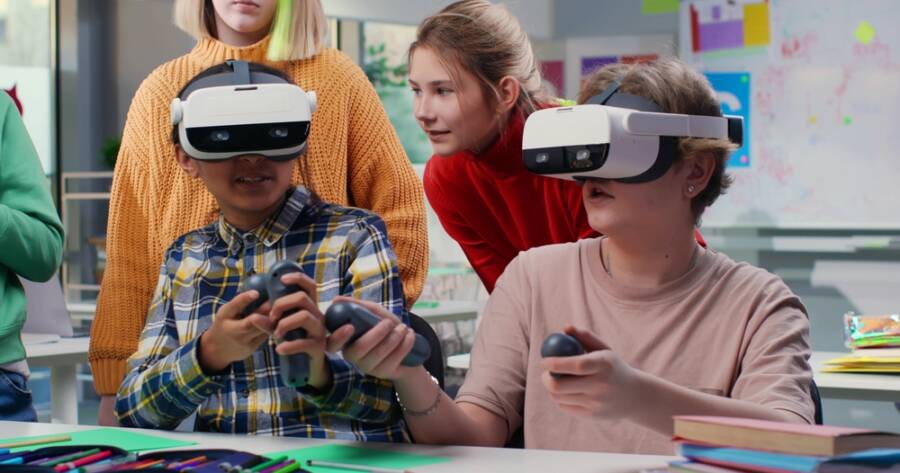Technology is revolutionizing education, providing innovative tools to enhance learning experiences. From interactive platforms to personalized learning apps, technology fosters engagement and accessibility in education. By exploring these advancements, learners and educators can unlock potential, transforming the way knowledge is acquired and applied. Embracing these tools aligns with modern educational needs, paving the way for a more dynamic and inclusive learning environment.
Interactive Learning Platforms
Interactive learning platforms like Kahoot and Nearpod are changing classroom dynamics. These tools encourage engagement through quizzes, polls, and multimedia presentations. By fostering active participation, students can explore subjects in an engaging and interactive manner.
These platforms often provide real-time feedback, allowing educators to assess understanding and tailor lessons accordingly. By incorporating gamification, they make learning enjoyable and competitive, motivating students to excel. This interactivity nurtures critical thinking and collaboration, aligning with diverse learning styles.
Personalized Learning with Adaptive Technologies
Personalized learning technologies offer tailored educational experiences, accommodating individual needs and paces. Tools like DreamBox and Khan Academy use algorithms to adapt lessons based on student performance, providing challenges aligned with skill levels.
These platforms encourage self-directed learning, allowing students to progress at their own pace. By supporting diverse learning styles, personalized technologies promote inclusiveness and accessibility. Educators can harness these tools to address specific areas of improvement, unlocking potential through targeted intervention.
Virtual Reality and Augmented Reality in Education
Virtual reality (VR) and augmented reality (AR) provide immersive experiences, transporting students to different worlds. Tools like Google Expeditions offer virtual field trips, allowing exploration of historical sites or scientific phenomena without leaving the classroom.
AR enhances textbooks and lessons by overlaying digital information onto physical objects, enriching the learning experience. These technologies stimulate curiosity and imagination, fostering deeper understanding. By engaging multiple senses, VR and AR create memorable, impactful learning moments.
Collaborative Learning Tools
Collaborative tools like Google Workspace and Microsoft Teams facilitate teamwork and communication among students and educators. These platforms support shared documents, video conferencing, and real-time collaboration, enhancing cooperative learning experiences.
By enabling seamless interaction, these tools promote collaboration and shared knowledge. Students can work on group projects, brainstorm ideas, and receive instant feedback, building essential teamwork skills. This connected approach reflects real-world dynamics, preparing students for future professional environments.
Accessible Learning for All
Technology plays a vital role in making education accessible to diverse learners, including those with disabilities. Tools like Kurzweil and Read&Write offer text-to-speech, speech-to-text, and other assistive features, supporting varied needs.
Online platforms provide access to vast resources, breaking geographical boundaries and enhancing inclusiveness. By leveraging technology, educators can create a universally accessible learning environment, offering every student the opportunity to succeed. This inclusivity fosters equality and represents a progressive educational landscape.
Enhancing Teacher Professional Development
Technology also supports educator growth by offering platforms for professional development. Tools like Coursera and LinkedIn Learning provide courses on innovative teaching methods and emerging educational trends, enabling continuous learning.
By accessing webinars, online workshops, and global educator communities, teachers can share insights and best practices. This interconnectedness fosters collaboration and innovation, enhancing teaching effectiveness. Embracing technology for professional growth reflects a commitment to refining educational practices and inspiring students.
Evaluating the Impact of Technology in Education
Measuring the impact of technology in education requires careful evaluation. Data collection and analysis offer insights into student performance and engagement levels, informing future strategies. Feedback from students, educators, and parents fosters adaptability and continuous improvement.
Balancing technology with traditional methods ensures a holistic approach to education. The thoughtful integration of technology amplifies learning, while recognizing its limitations guides its application. Embracing this balanced approach promotes sustainable educational development, aligning with diverse needs and goals.
Learn More Today!
Technology is unlocking new possibilities in education, enhancing learning experiences through interactivity, personalization, and collaboration. By embracing innovative tools, educators and learners can foster engagement, accessibility, and growth.
These advancements enrich educational practices, aligning with modern demands and nurturing potential. As education evolves, technology offers exciting opportunities to inspire, transform, and elevate the learning journey, paving the way for a brighter and more inclusive future in education.

